Being out on the trail definitely has its rewards. Its better for your health, you get to make new memories, and you influence others to go out also. But there are things to always be cautious about when being on a trail, and the hazards that come with it. Every place has its own unique plants, and animals to watch out for. But there are also more general things things to watch out for such as weather and trail conditions. This outdoor scoop will focus mainly on the wildlife and plant life native to Texas, that we see on our trail excursions. One thing to consider is that, many of these plants, animals and are not likely to make an appearance on the trail. But its important to know what they are, so that you know what to do in the case they do show up. Do not consider yourself an expert just from reading the blog, and always hike with someone familiar with trail safety for the area. Always be prepared for a hike with supplies and first aid equipment. Always tell people where you are going, and pay attention to your surroundings.
Plants in Texas
Do not touch
Starting off with the plants seemed right considering they are the least dangerous, but most prevalent on a trail. Now some can be very dangerous, but only if ingested. But nobody should be eating anything from the wild, unless they've had extensive training in identifying edible fruits and berries. The most common and most notorious plants out on the trail are poison ivy and poison oak. But in case you don't want to risk it, you can take a look at this website, which is great at helping you identify most plants with a picture and description.
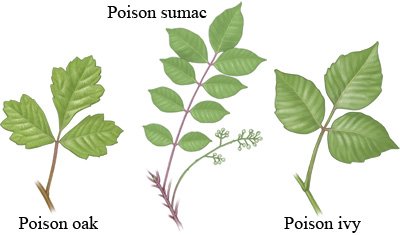
Do not eat
This fungus is popularized in everyone favorites game but is not that friendly when ingested. Mushrooms come in all shapes and sizes with many colors and interesting patterns. Some mushrooms can have potential health benefits, but if falsely identified can be mean life or death. Mushrooms can be found all over the state of Texas and because of their process in the life cycle, they are left alone. The safest thing to do is not pick or try and eat mushrooms, and simply snap a picture of one of nature’s tiny little decomposers.
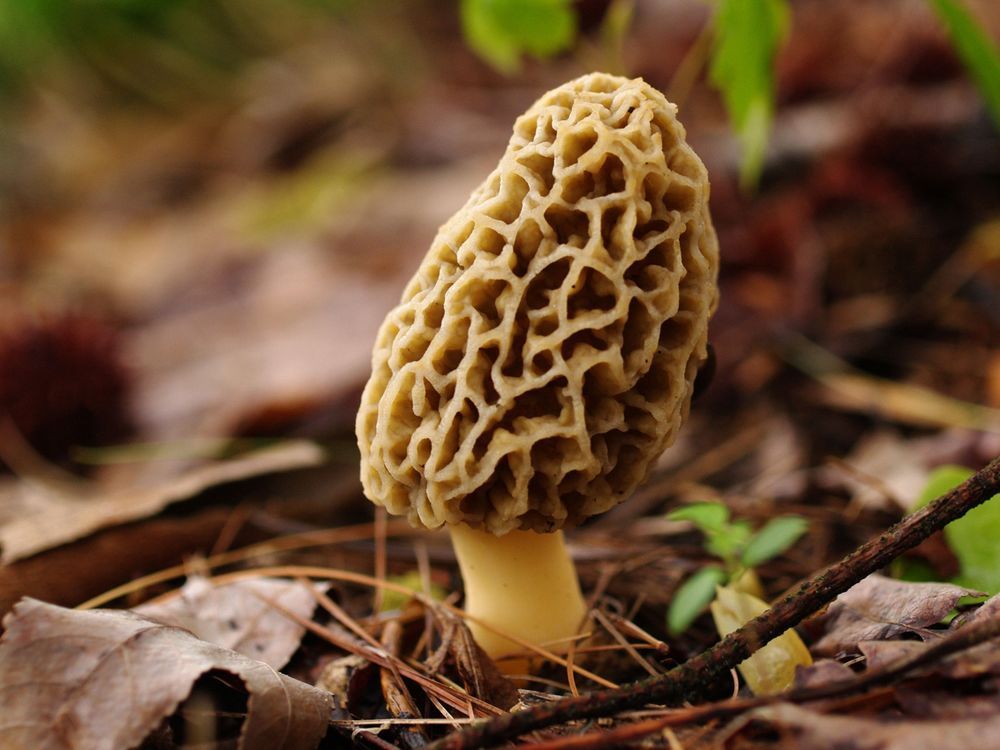
Other plants must be ingested for them to have a serious effect on your health. One of those plants, that's popularly used for its beautiful vibrant colors is the Oleander Shrub. Many people are familiar with it because of the ability for the shrub to display such an array of different colors despite harsh winds, or hot weather. This Shrub is not native to Texas but is used all over the state for landscaping purposes. We don't judge at Youth Odyssey but in case you're thinking of taking a bite out of this plant. Remember that all parts of the plant contain the toxin. So its better to avoid ingesting it in all its entirety.

Animals in Texas
Scorpions and Spiders
We all know that animals come in all forms, shapes and sizes. And a lot of the times, the smallest ones pack the biggest punch. This category is responsible for the largest fear among people, and for good reason. Spiders are small and they are everywhere. Most of them are harmless to humans but there are some that when bitten, can leave people seriously ill. The two most common deadly spiders in Texas are the black widow and the brown recluse. There is such thing as a brown widow as well, but are slightly less harmless due to less venom in their bites. Along with spiders, scorpions can also leave us with a painful memory if not avoided. But here in Texas, it’s the stripped bark scorpion that we see most often. Both creatures do not intend on hurting us but do live on and around the trails we visit. So, to avoid them, watch where you sit down, or set up camp. Don't pick rocks or logs without carefully inspecting them. And most of all, don't play with them or pick them up.
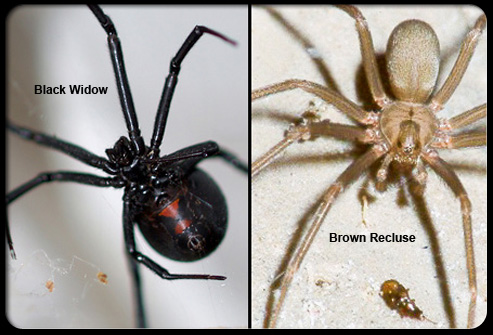
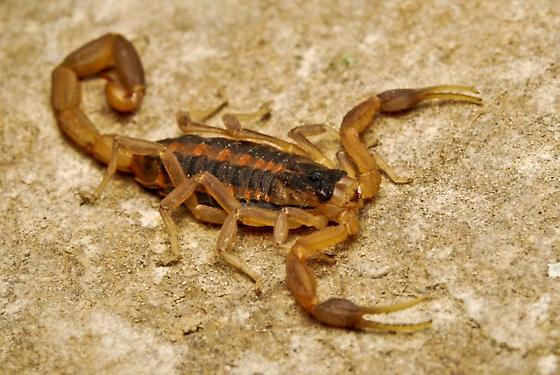
Snakes
In addition to the spiders and scorpions, there are larger more harmful reptiles that we need to keep our eye out for. Depending on where you are, these snakes are more or less likely to show up. But, can be expected to be seen all over Texas. The Western Diamondback Rattle Snake, Cottonmouth (water moccasin) and the Copperhead are the three snakes that must be avoided when out hiking. All three snakes can leave a bite victim critically ill if not treated immediately. When it comes to snakes, most bites happen merely from reflex. Humans are unfortunately encroaching more and more on their habitat, so encounters are becoming more frequent. But it does not take much to avoid a snake. Footsteps and loud voices are usually enough to deter away a snake basking in the sun. But if the snake does not retreat, then it’s better to avoid the snake and not force it to move.
How to tell the Difference
There are some specific signs to a venomous snake, which are usually in the eyes and the shape of the head. Circle eyes and round head are not venomous, but cat like eyes with a diamond shaped head are indicators or a venomous snake. In any case, it's always better to treat every snake like a venomous snake and admire their beauty from a distance. One thing to remember is that a snake can strike in fractions of a second, using 3/4 of their body length. So, make sure you are far enough away, and out of danger. Do not try handling a snake, and avoid getting struck. If a bite does occur, try and identify the snake and seek medical help immediately. If there is an accurate identification, the anti-venom given will be more accurate.
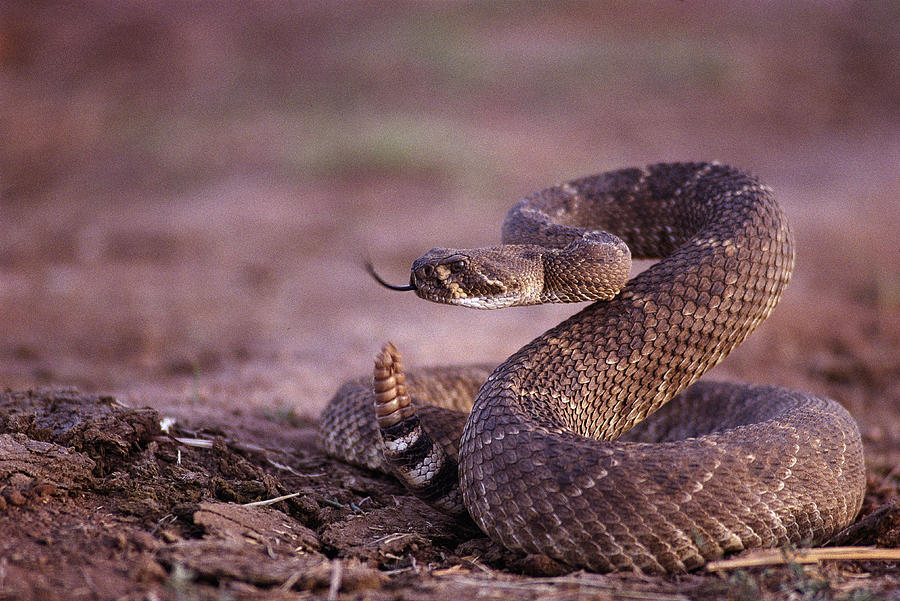
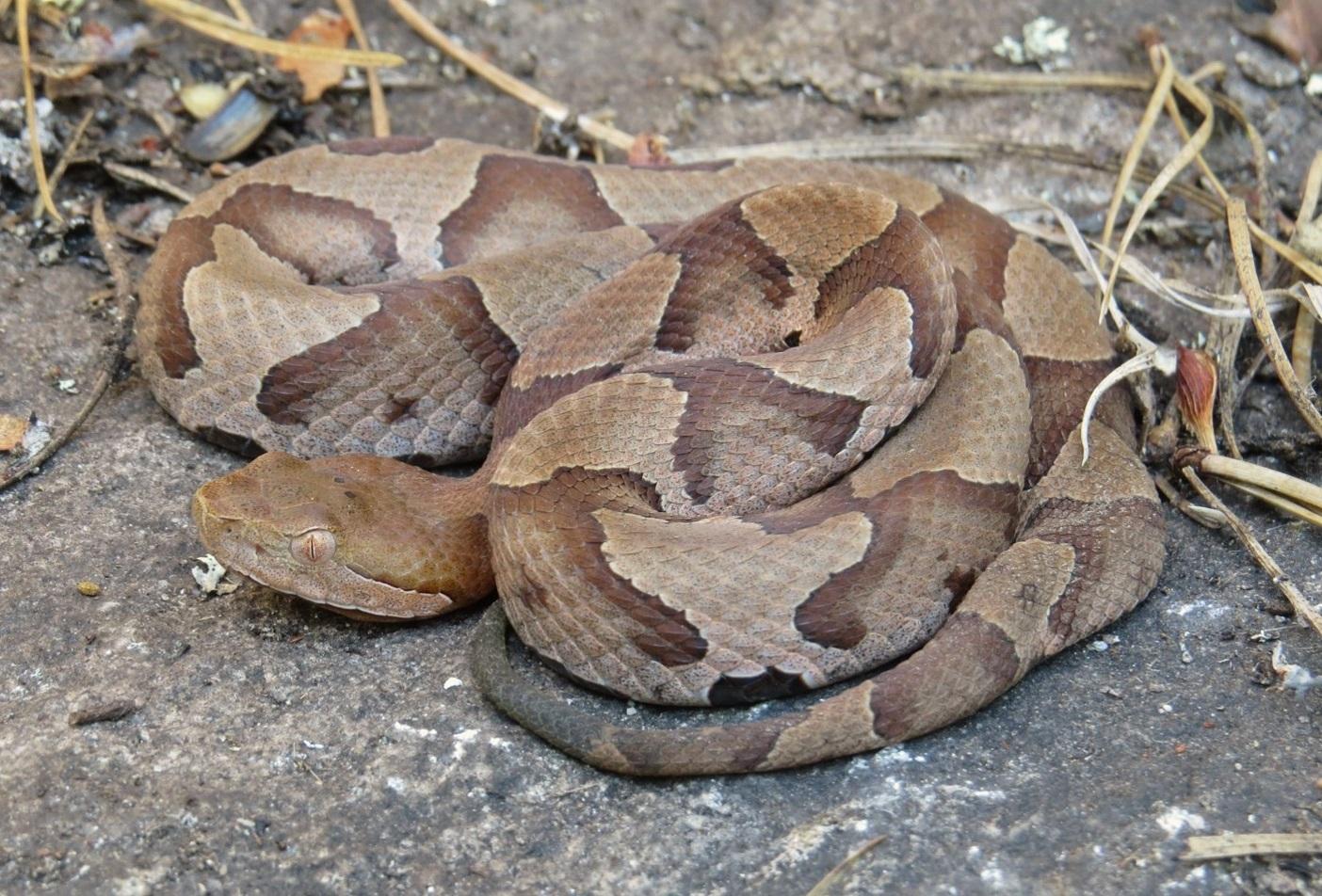
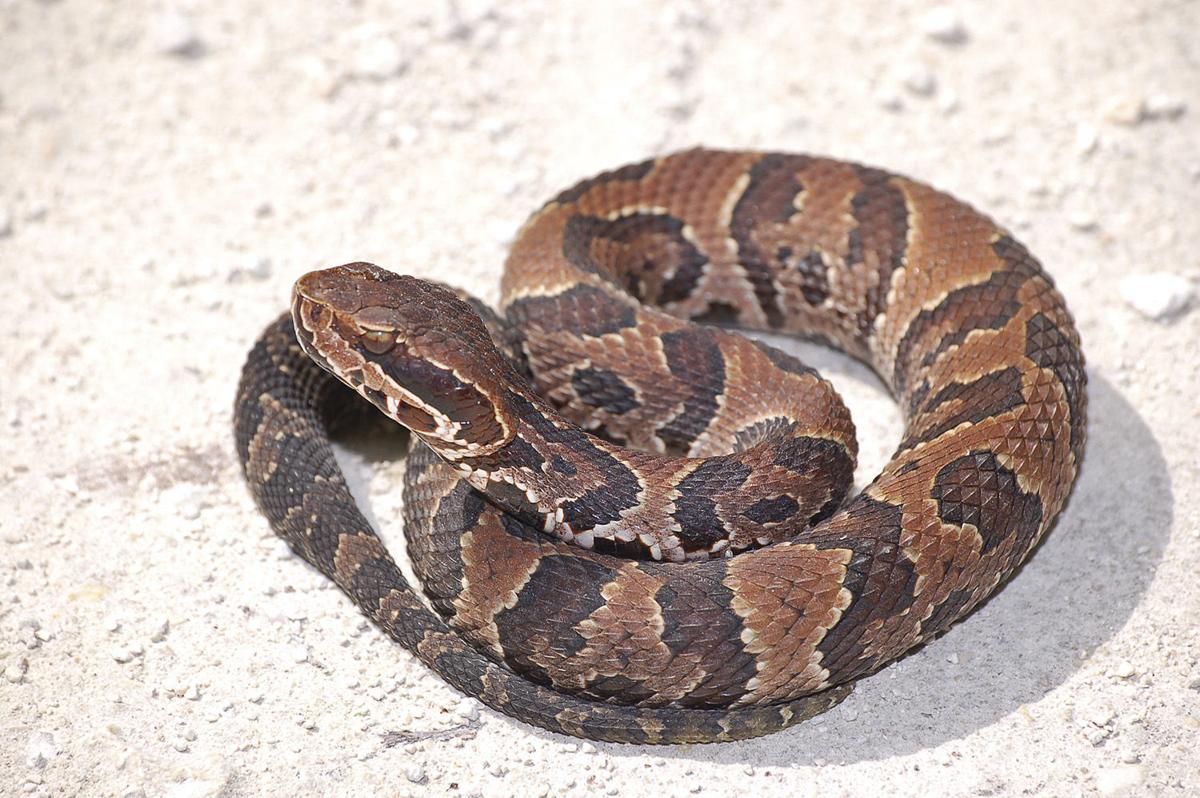
Large Mammals
Like snakes, these animals prefer not to be in the presence of humans. Occasionally, we cross paths and depending on the situation, injuries can result from the confrontation. So, it’s best to just avoid them if possible, and reduce the risk of getting injured. It’s not advised to try and chase them away or confront them alone. Mountain lions, Coyotes and Wild hogs can all cause serious injury to humans.
The smallest of the three, the wild hog can still cause serious lacerations with its tusks. Its best to avoid locations where they are present and identify the signs that indicate they are around so that you can leave the area. Foraging remains, scat droppings, footprints and bedding areas are all signs to look out for. Each species has more specific signs to look for, but these are few general indicators for their presence. And in some cases, many of these animals run in packs, so getting away from the area is always the better choice. If there is a sighting of any of these animals, let the park rangers so they can deal with the situation appropriately.
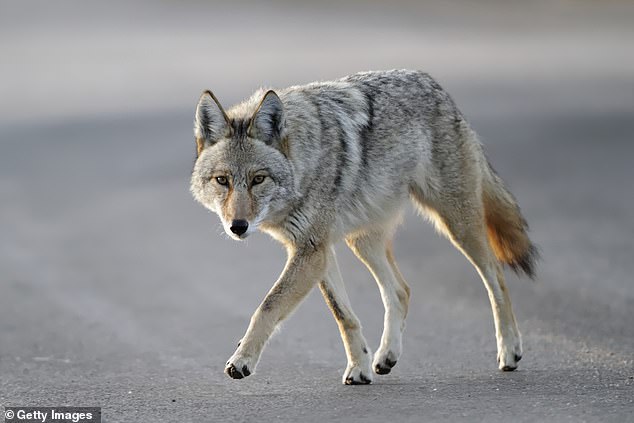
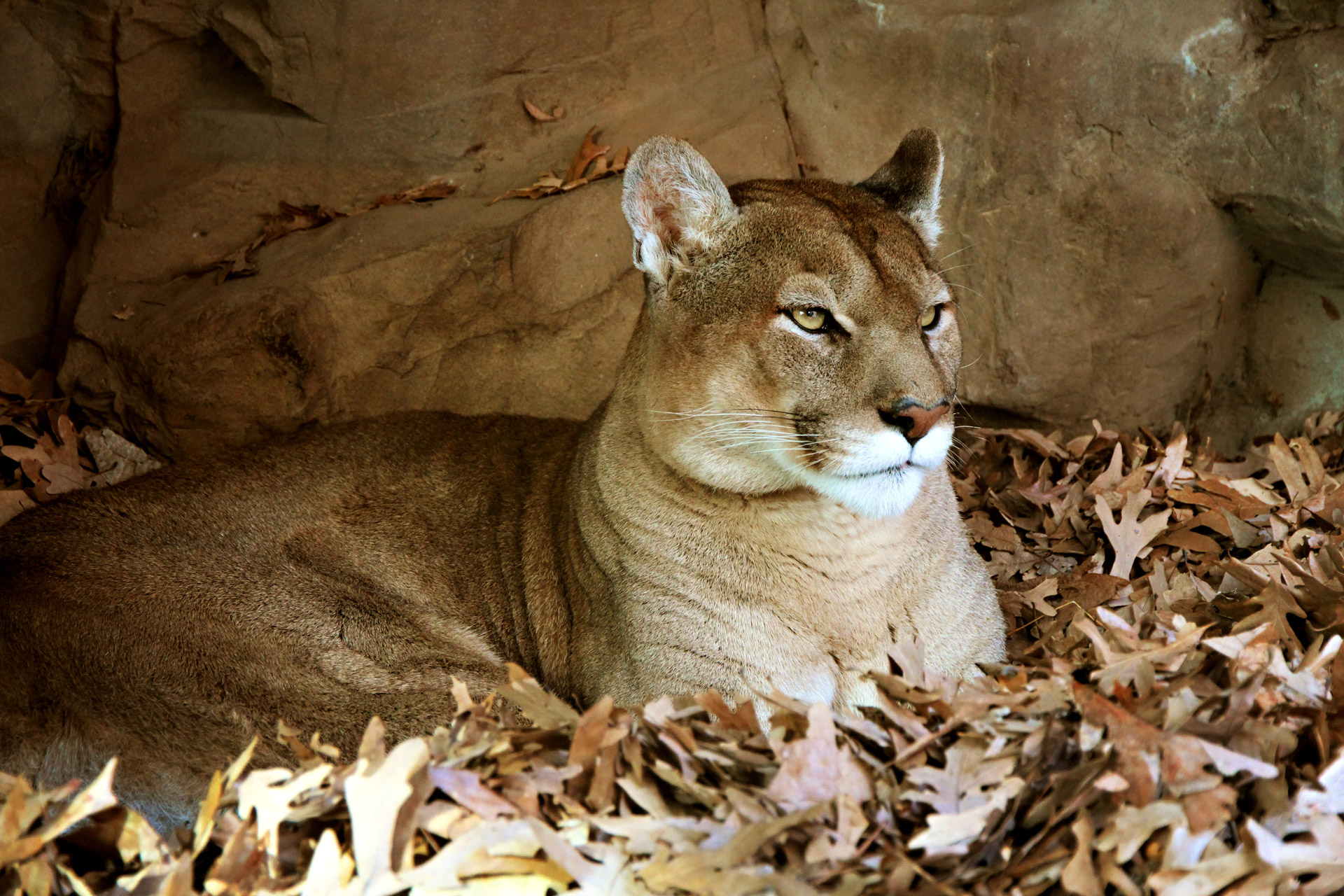
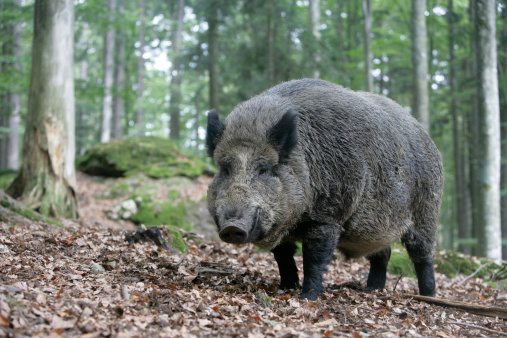
Night Time Critters
The next two critters are more common to see, but really do not like being around people. Now, eating any other left-over food in tents, bags, and campsites is a different story. Raccoons and Armadillos are quiet, and mostly carefree creatures that attract a lot of attention by being rather cute. But don't let their little eyes fool you. Armadillos are known to carry a disease that in the early years could be fatal, but with recent advancements in medicine, can now be cured. Contracting Leprosy from a nine banded armadillo can still lead to nerve damage and dis figuration if not treated. In any scenario, it’s still recommended by many to just admire these adorable creatures from a distance. Getting close enough for a photo should not be too hard. They can’t see really well but can but can spook due to their extremely good hearing.
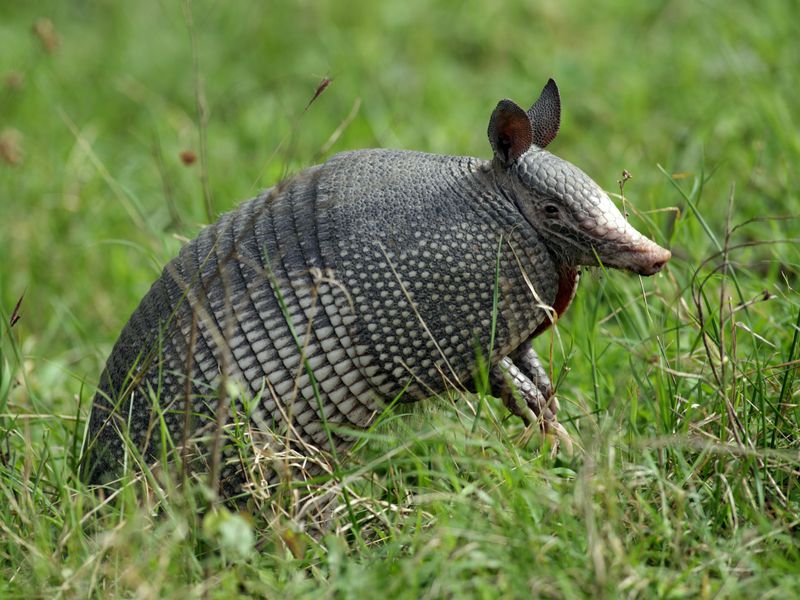

Raccoons can carry things like rabies, but just as likely as any other animal. More people will have trouble with them due to their curiosity and temperament. Raccoons will find interest in many things and can access food in the most unlikely places. Because of this, humans encounter them more than they want to. But it doesn't take much to get them to leave, they are normally gentle creatures, with a ferocious alter ego. So, to avoid any sneaky situations, just make sure all food is put up when camping. Its best to use locked containers because their little fingers can open lids, bags and even open zippers.
Extreme Natural Events
Flooding
Here in Texas, there are some natural threats that we need to keep an eye on. For example, downed trees, weathering and even flash flooding. Flash flooding in Texas is a real danger, and can affect large areas in a number of minutes. In recent years, these events have become more and more prominent and have affected many people in Texas. Watching out for weather is the easiest thing you can do, as well as heeding the warning posted by park staff and news stations. The biggest mistake that people make is underestimating the amount of water it takes to cause these events. With the geography in Texas, it doesn't have to be raining where you are for water to come rushing downstream from miles away. Know the area you are at, and listen to warnings given.

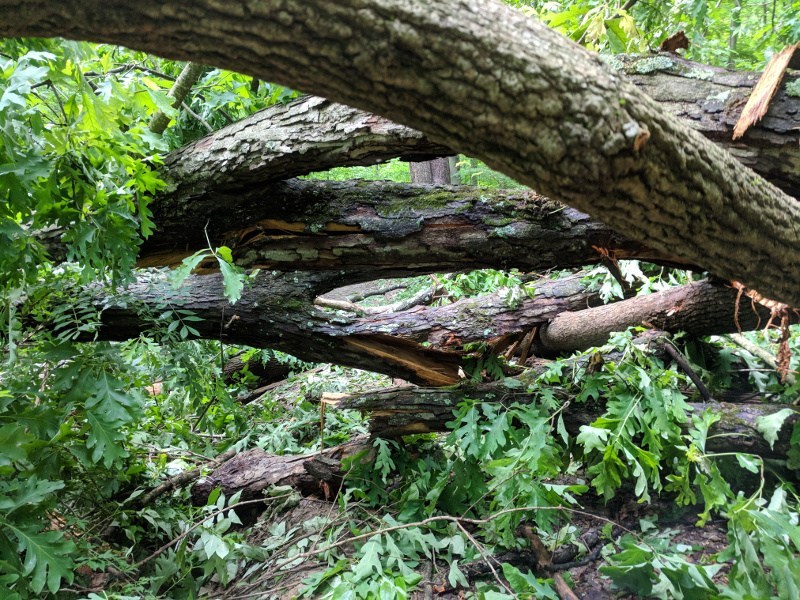
Downed Trees
Downed trees a little easier to avoid but are a serious thing to watch out for on very windy days. It is not uncommon for trees to block trials and cause people to veer off. Doing this can put you in an unsafe situation, so be careful of your surroundings. If you are in an area that's heavily wooded, keep watch for trees and branches that are highly decayed. These are the ones that are most likely to fall or break with even the slightest wind. It is also important to report objects on the trails so that rangers or park staff can come and remove it.
Weathering and Erosion
Like the decaying trees, it’s also important to watch out for weathered or eroded cliff faces, or river banks. Wind, and water are nature’s most creative artist. But you don't want to be present, when it carves out the side of a cliff or breaks off a section of river bank. Many of these areas, warn visitors of lose rock or brittle river banks. In any case, always pay attention to warning signs. Use caution near edges of cliffs and river banks, and always check the forecast for extreme weather.
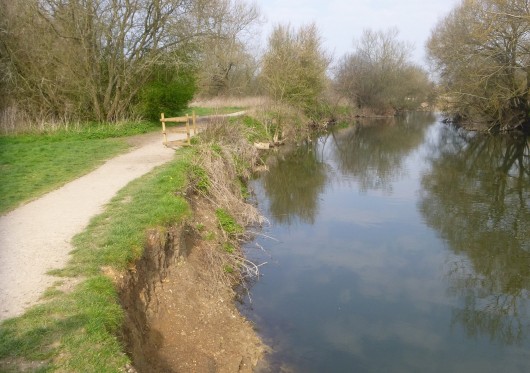
Weather
As we all know, the weather here in Texas can change drastically in just one day. But for the most part, there is always an idea of what can be expected. So, it’s the hiker’s responsibility to be aware and prepared before hitting the trail.
There are mainly four weather conditions that pose the most serious risks on the trail in Texas. Thunderstorms, extreme heat, cold and dense fog are all things to look out for before going out on the hike. All four weather conditions bring their own dangers, such as heavy rain, flooding, heat exhaustion, freezing temperatures, and poor visibility. In any case, its important to monitor the extent of each one of these events in case you find yourself going through one of them. There are special accommodations that can be made for certain weather condition and still hit the trail. But hiking through a thunderstorm for example, is not advised at all. Like mentioned earlier, one of the biggest mistakes people make is underestimate the extent or the possibility of one of these events to take place. But it’s better to be prepared for everything than to not have anything. One of those ways to prepare, is visiting the NOAA weather service site for up to date weather conditions and alerts.
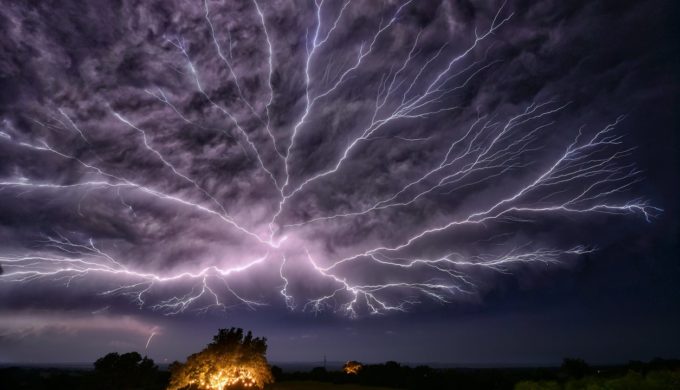
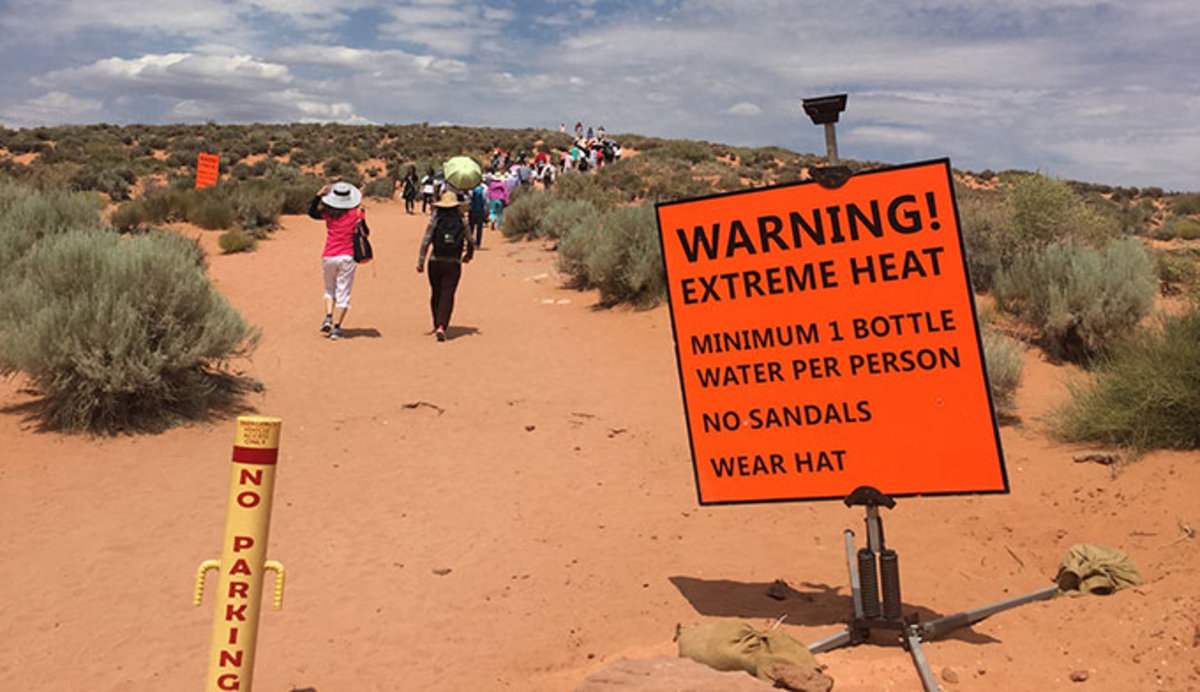
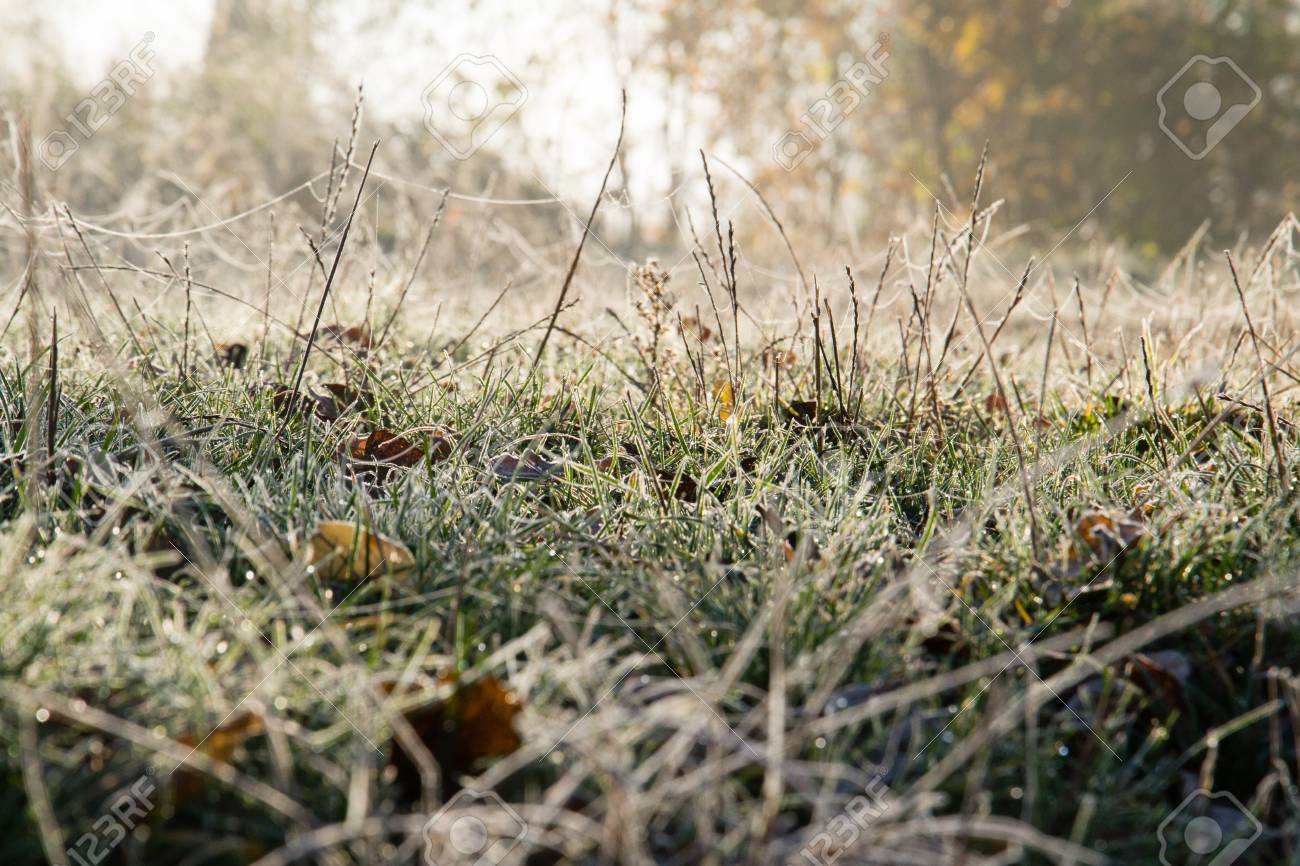
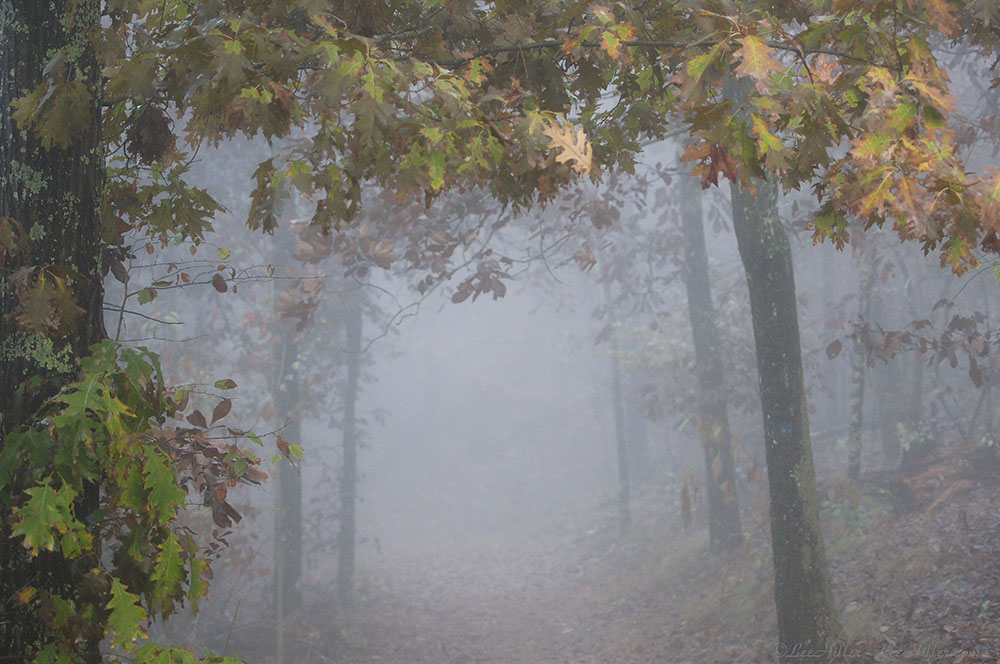
Safely Enjoy the Outdoors
The list presented in this blog, does not contain all the dangerous plants and animals you can run into on a trail in Texas. But these are some of the most common things that one can come across and should be prepared for, any time people go on a hike. Texas is a vast area with many different geographical attractions for people to go out and enjoy. In a single park, the trail can bend, descend, climb and go through a forest and then end at a lake. But never forget to look down and around the area you are visiting.
Always plan and look at the weather that is forecasted for the area and the surroundings areas. It’s important to pack any first aid equipment you think you will need, and make sure you have enough clothing to stay warm, and enough water to stay hydrated. Always tell people where you are going, and for how long knowing you can hit the trail prepared and ready to have an amazing time. Sometimes, these conditions allow for some of the coolest photos, and Youth Odyssey loves nature moments. So, if anyone has cool photos, they want to share of their nature moments which you can send it to us at our Facebook page. It could potentially make it too one of our social media posts on as well.






